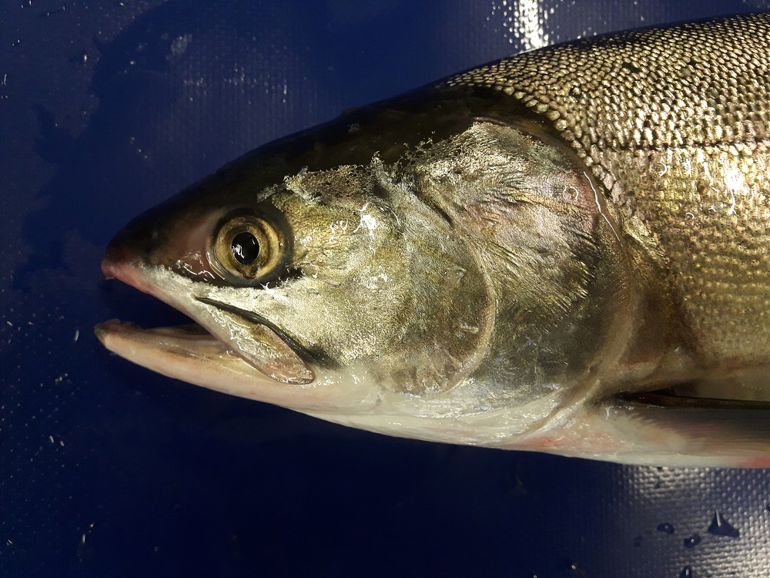First pink salmon caught in Welsh waters for decades

Natural Resources Wales (NRW) is urging nets men and anglers to report any unusual catches after the first pink salmon was caught in Welsh waters for decades.
The fish was caught in the river Dee at the Chester fish trap monitoring station.
Despite this being a Welsh first, numerous reports of captured pink salmon were made around the UK in 2017.
The majority were caught in Scotland and off the north east coast of England with a few isolated reports on the UK’s west coast.
David Mee, specialist fisheries advisor for NRW, said:
“It is quite unusual to find pink salmon in our waters, this may be the first in some 30 years, though there were numerous reports around the UK and Ireland in 2017
“I’d urge netsmen and anglers to contact us if they see any non-native salmon in the waters, with a date, location and, if possible a photograph, which would really help us identify them and build up a picture of where they may be.”
Data on sightings is vital to determine any potential impact on the local environment and species.
Pink salmon (Oncorhynchus gorbuscha), also known as humpback salmon, originate from the northern Pacific Ocean.
The appearance of the species is of concern as it may impact on Wales’ indigenous salmon and sea trout populations in the future.
The potential impact of pink salmon is unclear at present; however, these fish may introduce parasites and disease not present in native salmonid fish.
Interbreeding is unlikely as pink salmon spawn in late summer and Atlantic salmon spawn in winter, however competition for food and space in nursery areas between juvenile pink and Atlantic salmon is possible.
It is believed the fish made their way to northern Europe after being introduced commercially to Russian waters.
Anglers and netsman who catch pink salmon are asked not to return it to the water, instead to dispatch it humanely, record capture date, length and weight and make the fish available to NRW for further analysis.
Dave added:
“Keep the fish and do not release it back into the water, even in rivers only open for catch and release angling.
“Report your catch on NRW’s 24-hour incident hotline number 03000 65 3000 and we will arrange to collect the fish.”
How to identify a pink salmon:
- Large black oval spots on the tail
- Bluish back, silver flanks and white belly
- Much smaller scales than an Atlantic salmon of the same size
- Very dark mouth and tongue
- 40-60cm in length
- Breeding males develop a distinctive hump
In contrast, the native Atlantic salmon typically has:
- No spots on the tail
- Usually larger (up 100cm in length)
- Pale mouth and tongue
- Larger scales
- One or two black spots on the gill cover
- Spots on the back above the lateral line
- Thicker base of tail than a pink salmon
